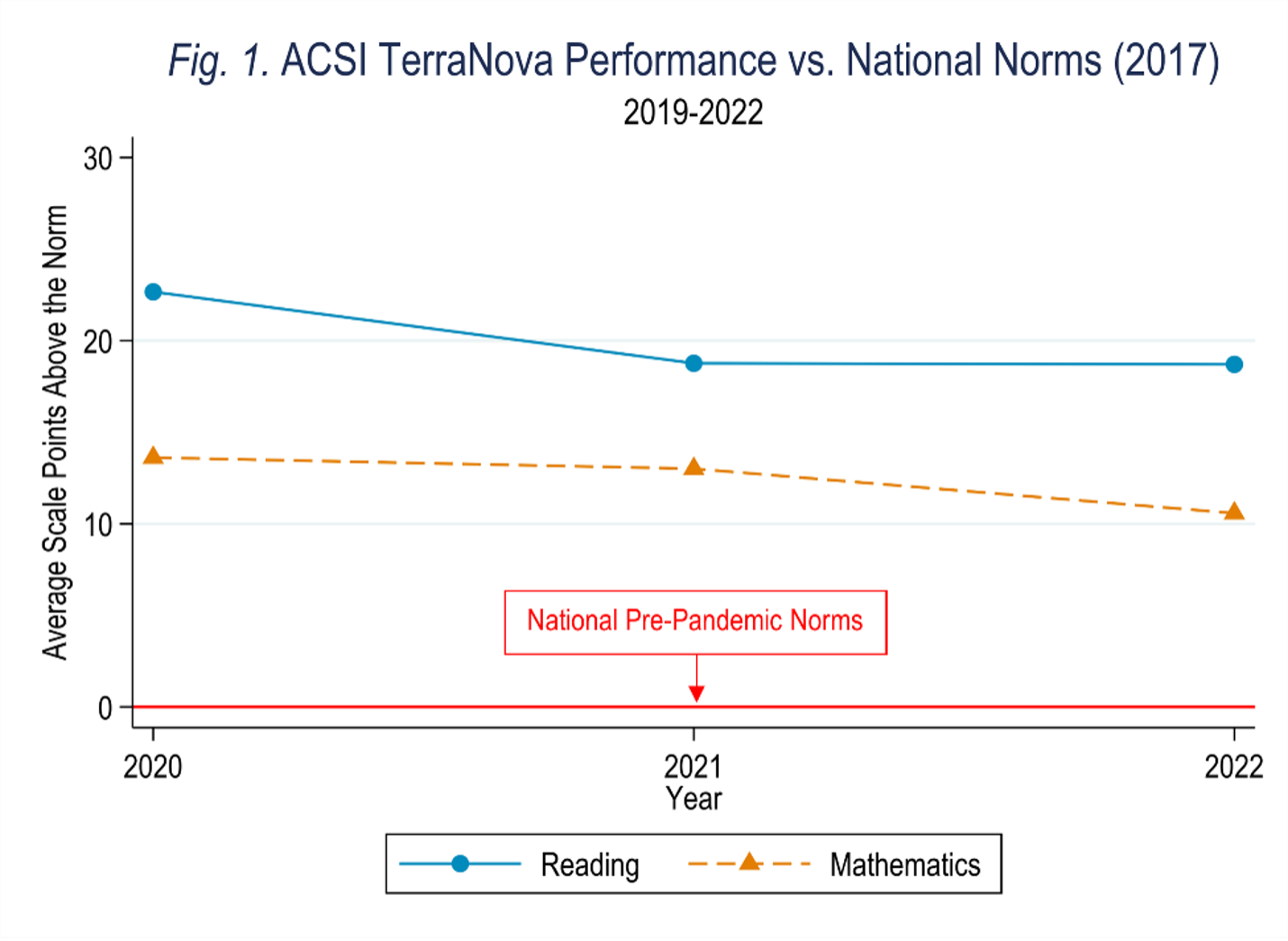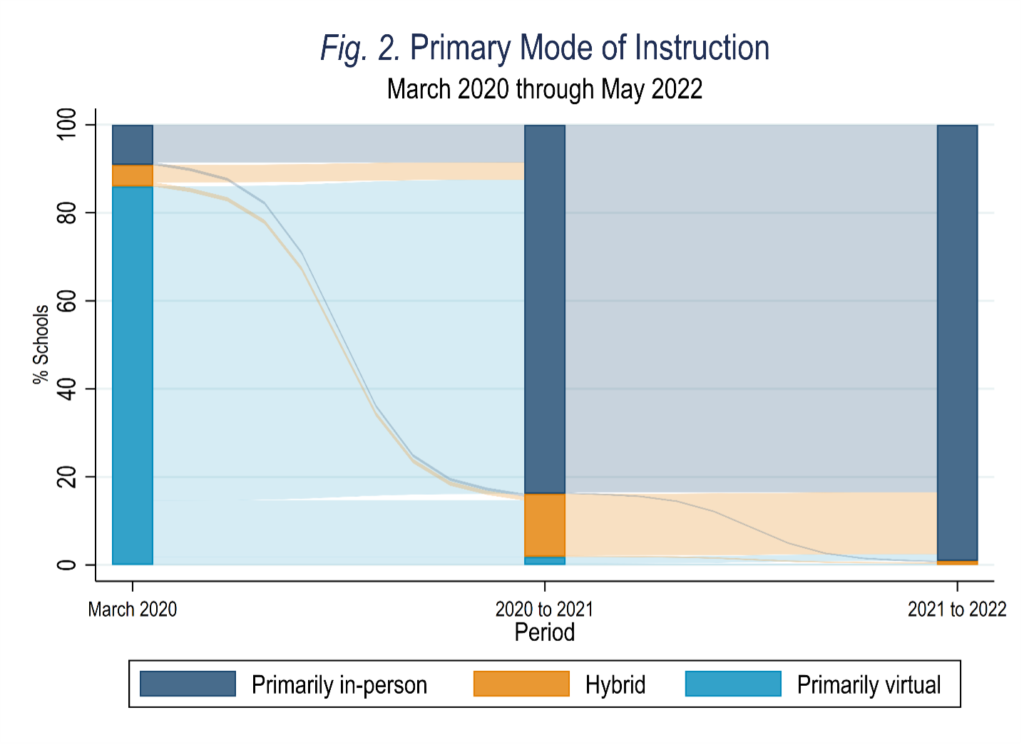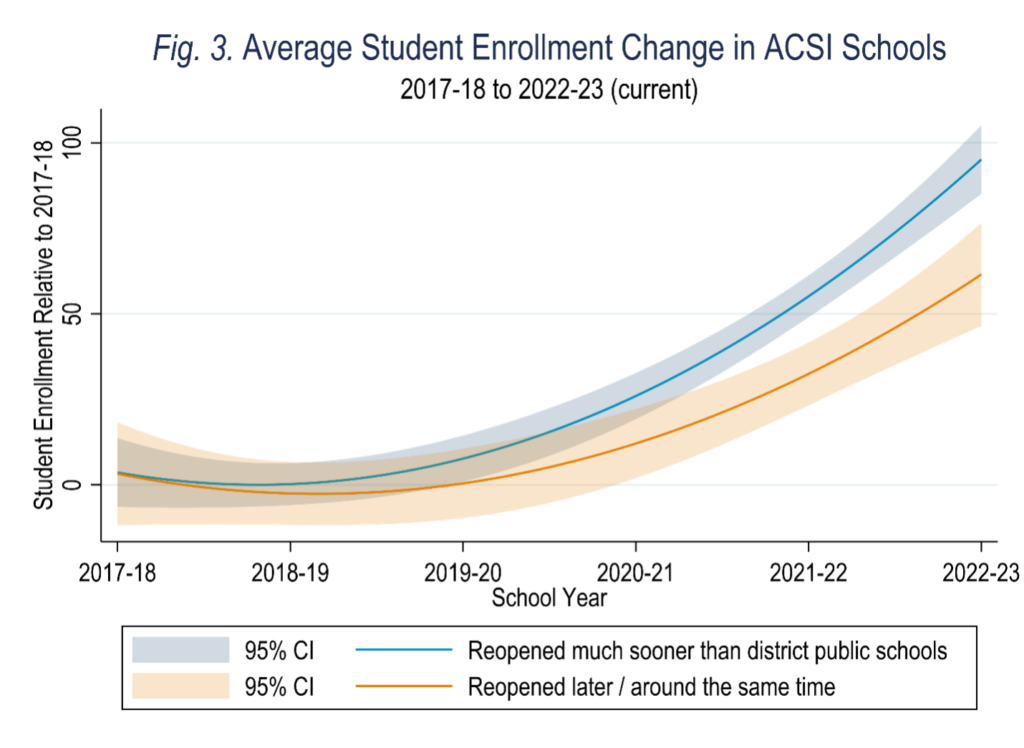As difficult as the past few years have been, Christian schools met the challenge, went above and beyond to serve their families, and continued to flourish. A new report from ACSI documents how Christian schools flourished in three ways: as a sector, they consistently maintained levels of academic excellence, responded quickly to students’ learning needs, and experienced substantial enrollment growth.
Maintaining Academic Excellence
First, we found that Christian schools consistently maintained high levels of academic achievement. To measure academic achievement, we used data from the TerraNova 3 (TN3), a testing service many members use through the ACSI Student Assessment Program. The TN3 was most recently normed during 2017 for both the Reading and Mathematics tests, so students who took the TN3 during the pandemic were compared to pre-pandemic national expectations.
For Christian schools participating in the TN3, we compared each tested student’s performance with pre-pandemic national norms and found evidence of high student achievement. The average student scored more than 10 points above the national norm in mathematics and roughly 20 points above the national norm in reading. ACSI schools managed this feat each year of the pandemic (see Figure 1).

Meeting Students’ Learning Needs
This academic achievement raises the question: amidst all of the disruptions posed by the pandemic, how did Christian schools accomplish this feat? In light of news that the “pandemic erased two decades of progress in math and reading,” how did these schools not merely preserve student learning, but promote student learning?
One clue lies in the mode of instruction. In October 2022, ACSI fielded a survey to gauge how member schools handled student learning during the pandemic. The survey yielded a 15 percent response rate, with 338 school leaders responding.
The survey showed that Christian schools responded quickly to the challenges posed by the pandemic. When the pandemic first hit in March 2020, roughly 85 percent of respondents reported that their schools operated in a primarily virtual mode of instruction. However, ACSI schools soon reopened for in-person instruction; 84 percent returned to physical classrooms by the fall of 2020, and nearly all schools were back in-person for the start of the 2021-22 school year. According to school leaders, this return to in-person instruction happened “much sooner” than surrounding district public schools (see Figure 2).

Although our data is only correlational with respect to mode of instruction and student learning, the data fit with what is observed in other sectors. Private schools and Catholic schools (which, like private Christian schools, returned quickly to in-person instruction) did not experience the two-decade reversal in math and reading scores. Instead, these schools report rising student achievement.
Experiencing Enrollment Growth
Frustrated with the response to the pandemic, many public school families have left their residentially assigned district school for private, charter, or homeschooling alternatives. According to a Harvard University report, over two million students have left their public schools for other options.
We find evidence of tremendous enrollment growth in ACSI schools through the pandemic. Since the first year affected by COVID (2019-20), ACSI schools have grown 35% on average. As with student learning, mode of instruction seems to be an important factor. School leaders who reported returning to in-person instruction “much sooner” than district public schools have added nearly 100 students on average since the 2017-18 school year. In contrast, school leaders who reported returning “around the same time” or “much later” have added about 60 students to their rolls over the same period of time. Figure 3 plots this enrollment growth with a 95% confidence interval.

Of course, mode of instruction is not the only consideration for families. We asked school leaders about the factors related to enrollment trends over the past few years. Among schools that experienced enrollment gains, parents’ desire for in-person instruction was one of the most common reasons (78 percent), along with parents’ concerns about social issues in public schools (82 percent) and parents’ desire for faith-based education (78 percent).
Conclusion
Private Christian schools have gone above and beyond to serve their families, and they have flourished through the pandemic as a result. Our new report indicates that ACSI schools consistently maintained high levels of academic achievement, responded quickly to students’ learning needs, and experienced tremendous growth.
Editor’s Note: This post is co-published by the ACSI blog and the CACE blog, in an effort to bring innovative and relevant thinking in Christian education to our respective readerships.
About the Author
 Matthew H. Lee is the Director of Research at ACSI. He can be reached via email at matthew_lee@acsi.org and followed on Twitter @hmatthewlee.
Matthew H. Lee is the Director of Research at ACSI. He can be reached via email at matthew_lee@acsi.org and followed on Twitter @hmatthewlee.
 Eric W Price is the Research Associate at ACSI. He can be reached via email at eric_price@acsi.org.
Eric W Price is the Research Associate at ACSI. He can be reached via email at eric_price@acsi.org.

